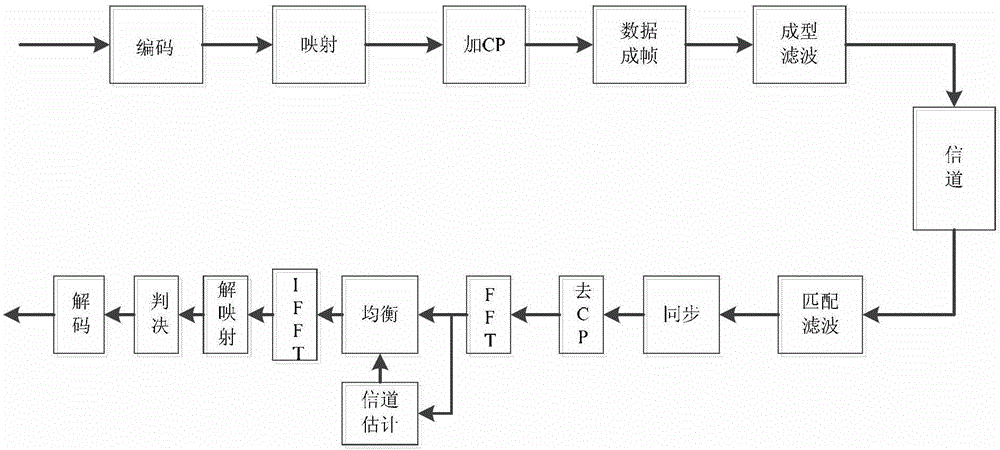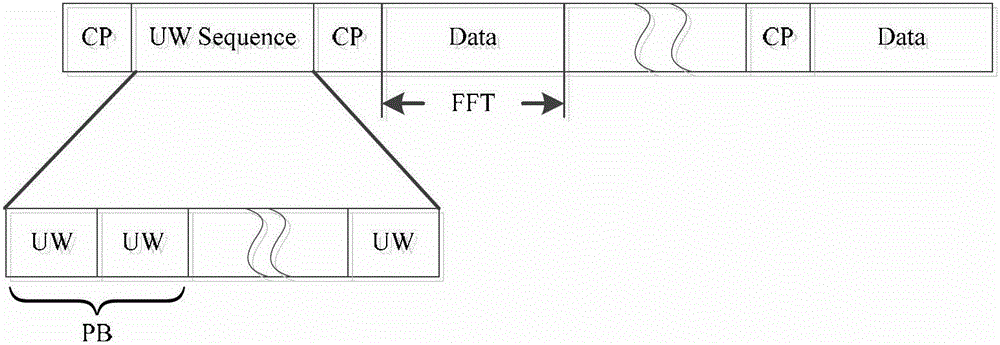Channel Estimation Method Based on Pilot Block in Single Carrier Frequency Domain Equalization System
A single-carrier frequency domain, channel estimation technology, applied in the field of wireless communication, channel estimation algorithm, can solve the problem that the channel noise cannot be estimated, and achieve the effect of improving performance
- Summary
- Abstract
- Description
- Claims
- Application Information
AI Technical Summary
Problems solved by technology
Method used
Image
Examples
Embodiment Construction
[0021] The present invention will be further described below in conjunction with the accompanying drawings.
[0022] The schematic diagram of the single carrier frequency domain equalization system is as follows: figure 1 As shown, in practical applications, in order to reduce the implementation complexity, FFT is usually used instead of DFT, and IFFT is used instead of IDFT. At the transmitter, the encoded data is mapped to form a data block with a length of N, and the last N of each data block is g A symbol is copied to the front of the data block as CP (CyclicPrefix, cyclic prefix), and the data block is framed according to the frame format and transmitted after shaping and filtering. At the receiving end, after the data undergoes matched filtering, synchronization, and CP removal operations, it is transformed into the frequency domain through FFT, and after channel estimation and equalization processing in the frequency domain, it is returned to the time domain through IF...
PUM
 Login to View More
Login to View More Abstract
Description
Claims
Application Information
 Login to View More
Login to View More - R&D
- Intellectual Property
- Life Sciences
- Materials
- Tech Scout
- Unparalleled Data Quality
- Higher Quality Content
- 60% Fewer Hallucinations
Browse by: Latest US Patents, China's latest patents, Technical Efficacy Thesaurus, Application Domain, Technology Topic, Popular Technical Reports.
© 2025 PatSnap. All rights reserved.Legal|Privacy policy|Modern Slavery Act Transparency Statement|Sitemap|About US| Contact US: help@patsnap.com



